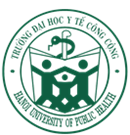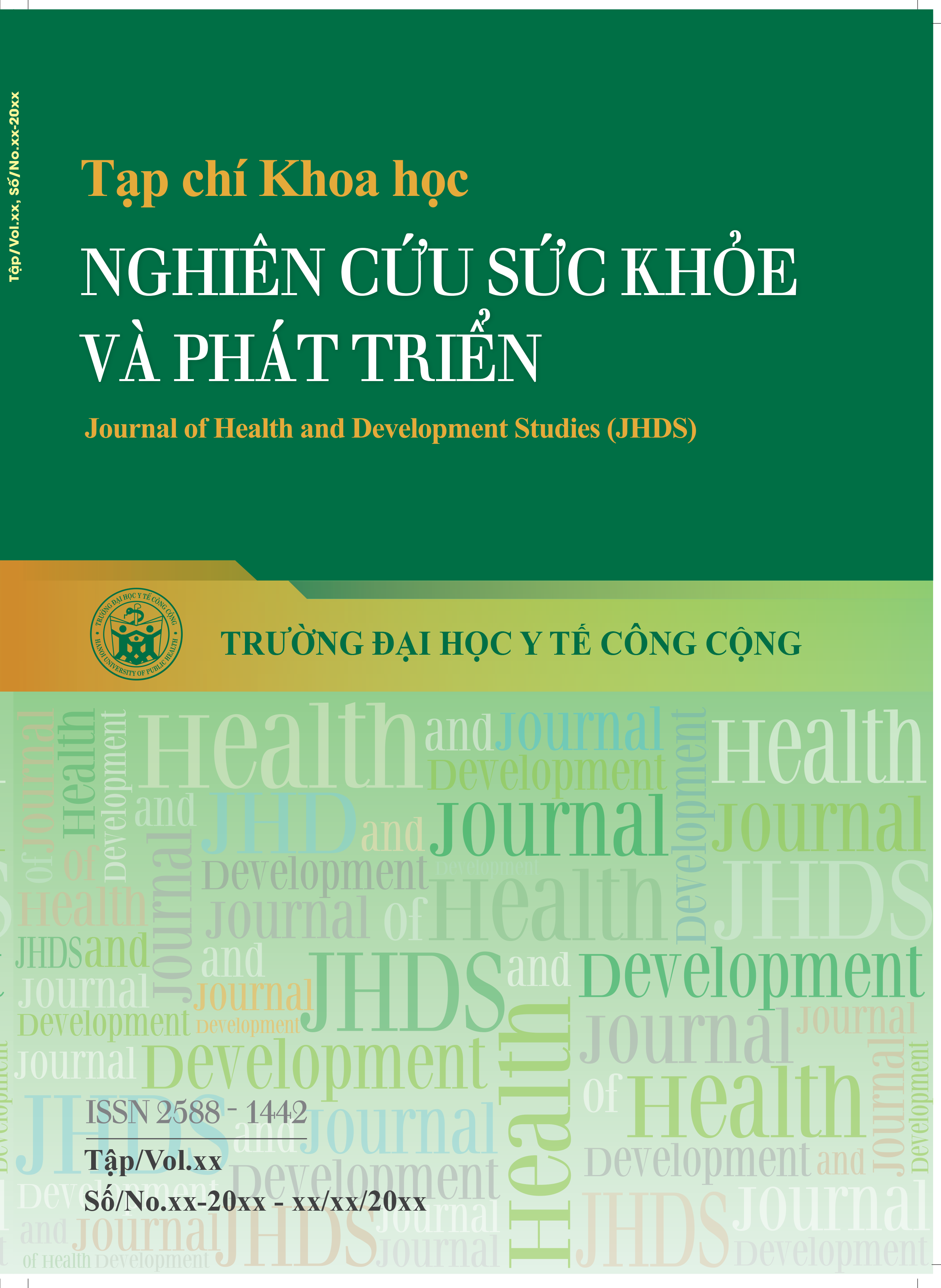Tạp chí
Khoa học Nghiên cứu Sức khỏe và Phát triển
(Journal of Health and Development Studies – JHDS)
Trường Đại học Y tế công cộng
ISSN (Print): 2588-1442
ISSN (Online): XXXX-XXXX
https://jhds.edu.vn
People’s access to information and the practice of COVID-19 prevention during the first lockdown period in Hanoi in april, 2020
- Mã bài báo : SKPT_21_019
- Ngày xuất bản : 15/07/2021
- Số trang : 99-109
- Tác giả : Nguyen Thi Thu Ha
- Lượt xem : ( 747 )
Danh sách tác giả (*)
- Nguyen Thi Thu Ha 1 - Hanoi Medical University
- Bui Bich Huong 1 - Hanoi Medical University
- Pham Bich Diep 2 - Hanoi Medical University
Objectives: To describe people's access to information and the practice of COVID-19 pandemic prevention during the first lockdown in the period from 7thto 30th April.
Methods: A descriptive cross-sectional study was conducted among 319 subjects through a convenient sampling procedure. Online self-administered questionnaires through social networks including Facebook, Zalo, etc were used. Descriptive statistics were used to present the data using mean, frequency and percentage.
Results: The most popular information channels which people in urban and rural areas regularly accessed for COVID-19 related information were television and radio (55.6% and 72.7% respectively). The sources of information that the highest percentage of people accessed was the Government's /Ministry of Health’s SMS, followed by social media. People were most interested in searching for information about "Evolution of the epidemic COVID-19" and the least interested in the information about "Prevention according to folk beliefs and methods”. Proactive prevention practices were well implemented during the first lockdown such as "Wear a mask properly" with 99.1%, followed by "Minimize going to the street except in necessary cases" (98.8%) and "Stop non-urgent activities, work from home when needed" with 98.8%. The proportion of people who practiced "Clean the surface of objects with an antiseptic solution" was the lowest at 87.5%.
Conclusion: Mass media and the Government information source are regular users to access information by respondents. Therefore, the information channel and source should be taken into account for health education in general and Covid -19 prevention in particular.
- DOI : https://doi.org/10.38148/JHDS.0504SKPT21-019
- Chủ đề : Quản lý hệ thống y tế
- Loại bài báo : Nghiên cứu gốc
- Chuyên nghành : Chuyên Ngành Y
 Thông tin liên hệ : Nguyen Thi Thu Ha
Thông tin liên hệ : Nguyen Thi Thu Ha Email : nguyenthuha071198@gmail.com
Email : nguyenthuha071198@gmail.com Địa chỉ : Hanoi Medical University
Địa chỉ : Hanoi Medical University
- Từ khóa :
- COVID-19
- information
- prevention.
Bài báo liên quan
- Respiratory symptoms and some related factors in waste collection workers at 2 branches in Hanoi, 2017
- Inpatients’ experience and the associated factors: A cross-sectional study at Lung hospital, Son La, in 2020
- People’s access to information and the practice of COVID-19 prevention during the first lockdown period in Hanoi in april, 2020
- Acceptability of applying asthma action plan for asthma patients at a hospital in Hochiminh City, Vietnam: an implementation research
- Quality of healthcare services and its related factors among inpatients in Ho Chi Minh Oncology hospital in 2020
- Job satisfaction and its associated factors of preventive medicine workers in northern Vietnam
- Situation of microbiological contamination in bottled drinking water products and some influencing factors in Hau Giang province in 2020
- Quality of periodic health examination service for employees and associated factors at the New Port Medical Center, Ho Chi Minh city in 2020
- Social support and related factors among the elderly in Thuy Bieu ward, Hue city
- Self-reported social support at works among nurses and associated factors. Results from a cross-sectional study in a provincial hospital in 2020.
- Students who are both victims and perpetrators of physical violence at a private high school in rural North Vietnam: Prevalence and Socio-Demographic Correlates
Bài viết mới nhất
- Một số trang web hữu ích đối với các nhà khoa học
- Dành cho chuyên gia
- Tạp chí Khoa học Nghiên cứu sức khỏe và Phát triển duyệt tối đa 1,0 điểm ngành Y trong Danh mục Tạp chí khoa học được tính điểm của Hội đồng giáo sư Nhà nước
- CHÚC MỪNG NGÀY BÁO CHÍ CÁCH MẠNG VIỆT NAM (21/6)
- GS.TS Hoàng Văn Minh - Hiệu trưởng Nhà trường 'lọt top' nhà khoa học có chỉ số trích dẫn hàng đầu thế giới

 File toàn văn
File toàn văn